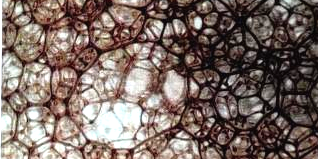How do surfactants in water impact the formation and stability of emulsions?
Emulsions refer to a mixture of two immiscible liquids, often oil and water, stabilized by the presence of an emulsifying agent, which are frequently surfactants. Without surfactants, the two liquids would separate due to their incompatible nature. But with surfactants, emulsions can form and remain stable for a longer period.
The Impact of Surfactants on Emulsion Formation and Stability
1. Role in Emulsion Formation:
Surfactants, with their dual hydrophilic and hydrophobic properties, serve as mediators between oil and water. The hydrophilic (water-attracting) head of the surfactant tends to bond with water, while its hydrophobic (water-repelling) tail aligns with oil. This interface interaction between oil and water facilitates the blending of both liquids, leading to the formation of an emulsion.
2. Ensuring Emulsion Stability:
In the absence of surfactants, emulsions would break down quickly as the oil and water separate due to their natural immiscibility. However, surfactants contribute to the stability of the emulsion by forming a protective layer around the dispersed droplets (these could be either water droplets in oil or oil droplets in water, depending on the type of emulsion). This layer prevents the merged droplets from aggregating and separating out, hence stabilizing the emulsion.
3. Prevention of Coalescence:
Surfactants prevent the coalescence (combining) of the droplets within the emulsion. The balance of attractive and repulsive forces introduced by the surfactants creates a physical barrier that keeps the droplets apart. It stops them from merging into larger droplets, which could eventually lead to the separation of the oil and water phases.
4. Types of Emulsions:
The type of surfactant used can also determine whether the emulsion is oil-in-water (O/W) or water-in-oil (W/O). An O/W emulsion has oil droplets dispersed in a continuous water phase, while a W/O emulsion has water droplets dispersed in a continuous oil phase. A more hydrophilic surfactant will favor O/W emulsions, while a more hydrophobic one will favor W/O emulsions.
In essence, surfactants play a crucial role in both formation and stabilization of emulsions. Their unique look-alike compatibility with oil and water helps mix two otherwise incompatible entities, while their preventative action helps maintain this blend, leading to a stable emulsion. Their part in emulsification doesn’t just underpin critical activities in daily life, such as cooking and cleaning, but it also forms the fundamental basis for a myriad of industrial, scientific, and healthcare applications.







